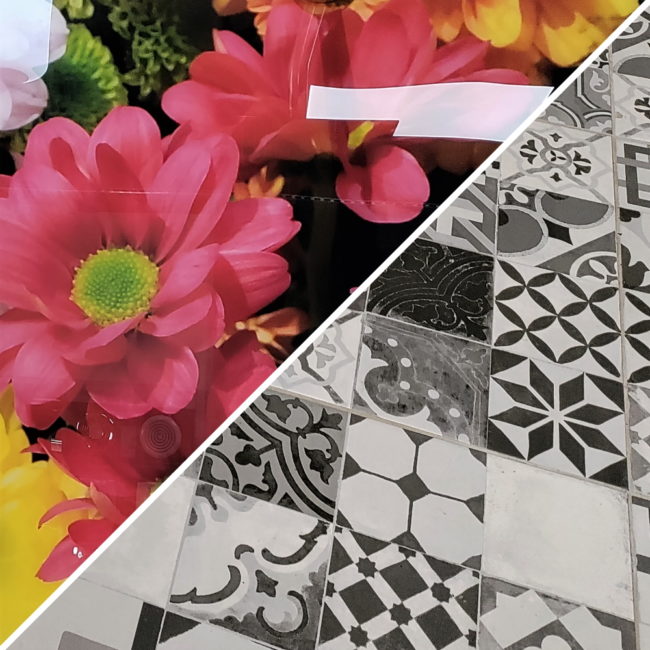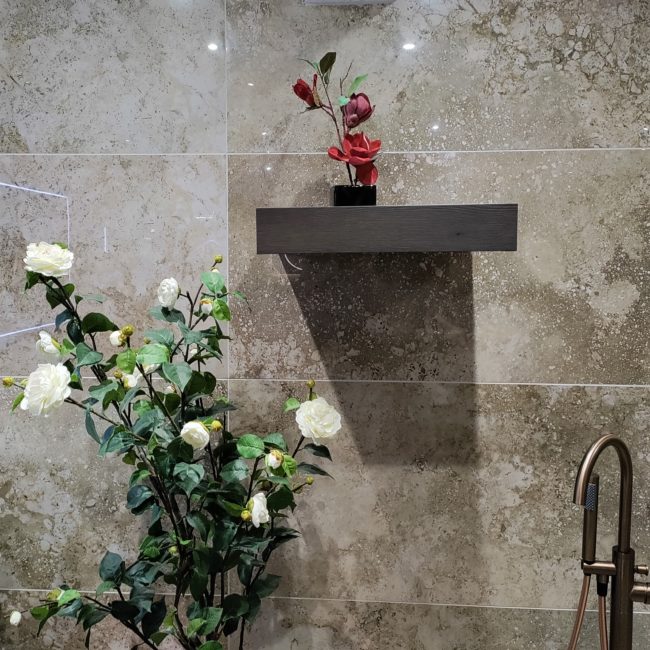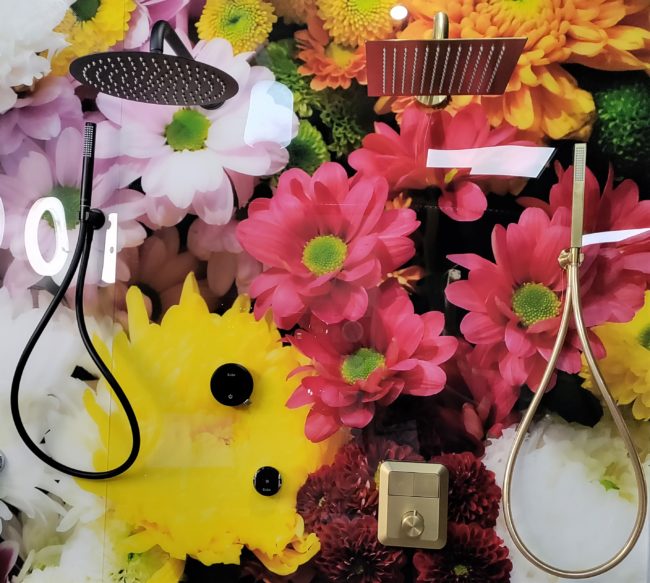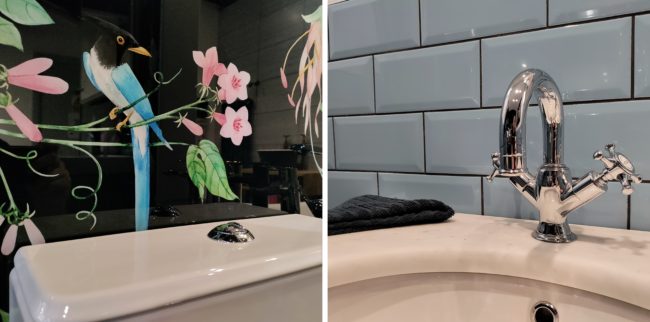Decisions, decisions…
When designing your bathroom the first products that come to mind are things like the taps, furniture, baths and showers. But equally as important are the walls and floors. There’s a plethora of materials and styles to pick from, but the main choice you’ll be presented with is are you going to have panels on the wall, or tiles?


Tiles
Tiles are traditionally the go-to choice for both bathrooms and kitchens. The glaze on the surface of the tile makes them extremely hard wearing which allows them to be both resistant to scuffs and knocks as well as very long-lasting.
Although tiles are a more traditional choice, there are a range of modern finishes available. You can also often match your floor tiles to the wall tiles if you want to create a more coordinated design. Tiles are also comparatively, cheaper to produce (although this isn’t always the case!) when compared to other waterproof wall coverings.
The main downsides to tiles are they are quite labour intensive to fit. Cutting them in any way often requires specialist tools and fitting them well takes a practiced skillset. Grout can be a pain to clean and will sometimes need to be re-done over time which is time consuming and not inexpensive. Also, although they are hardwearing when fitted, they are very susceptible to damage when being transported and stored which is always a top concern for us!
Panels
Wall panelling on the flip side, is the more modern and easy-to-fit solution. Wall panels come in a plethora of designs and many manufacturers will even print custom designs that you can supply them! This means you can have a totally unique room, with wall coverings you can be sure nobody else will have.
Tongue and groove panels allow for a seamless finish, and even standard panels just need a specialist adhesive to apply to the walls, so there’s no grout to worry about. They’re also extremely easy to cut, not requiring any specialist tools or expertise which greatly reduces the skills required and the time fit them. Coupled with being extremely lightweight, it makes them an excellent solution for a quick-fit.

And now for the downsides! Panels are perfectly durable, but they are more susceptible to damage than tiles. They are often made from a corrugated material layered with the flat panels either side. This means that if they suffer an impact, they can become permanently dented. Not being glazed like a tile also means that they are more easily scratched and scuffed, although not so easily that it causes a problem in most installations.
They also present their own challenges during transport and storage. Unlike tiles they don’t tend to shatter, however they can bend and warp! As such we have to be careful about how we store panels, ensuring that they are up against other flat surfaces and that their edges are well protected.

So, which should you get? Tiles or panels?
The answer isn’t up to us. For every bathroom design and installation there are different challenges and solutions. You may find that you want to bring your installation time down and so panels are perfect for this, requiring a less time and specialist skills to fit. However you may decide, you want this room to stand the test of time or perhaps you want the floors to perfectly coordinate with the walls, and so tiles would be your best option.
Either way, there’s an enormous range of shapes, styles and textures to pick from off the shelf, and even bespoke options to pick from for a truly unique finish.
